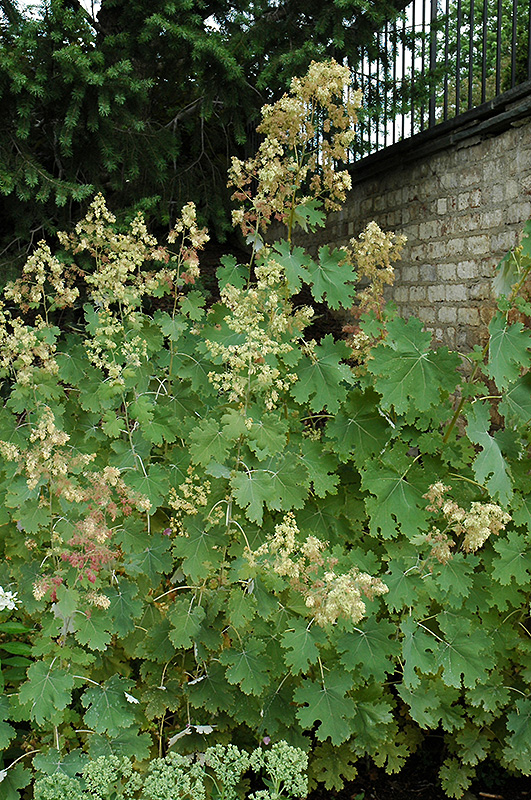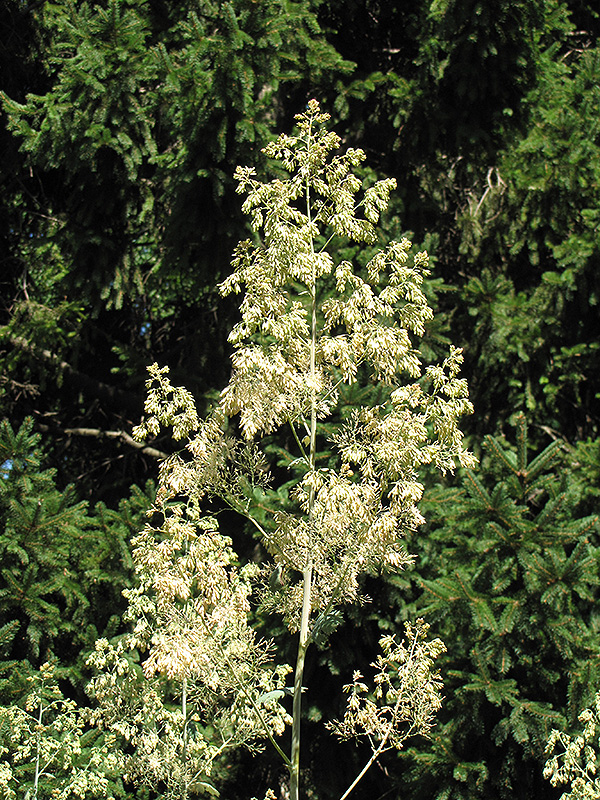Plant Height: 6 feet
Flower Height: 8 feet
Spacing: 24 inches
Sunlight:
![]()
![]()
Hardiness Zone: 2
Ornamental Features
Plume Poppy features airy panicles of creamy white flowers rising above the foliage from mid to late summer. Its attractive large tomentose lobed leaves remain grayish green in colour with curious silver undersides throughout the season.
Landscape Attributes
Plume Poppy is an herbaceous perennial with a rigidly upright and towering form. Its wonderfully bold, coarse texture can be very effective in a balanced garden composition.
This is a high maintenance plant that will require regular care and upkeep, and should be cut back in late fall in preparation for winter. Gardeners should be aware of the following characteristic(s) that may warrant special consideration;
- Spreading
- Self-Seeding
Plume Poppy is recommended for the following landscape applications;
- Vertical Accent
- General Garden Use
Planting & Growing
Plume Poppy will grow to be about 6 feet tall at maturity extending to 8 feet tall with the flowers, with a spread of 3 feet. When grown in masses or used as a bedding plant, individual plants should be spaced approximately 24 inches apart. It grows at a fast rate, and under ideal conditions can be expected to live for approximately 10 years. As an herbaceous perennial, this plant will usually die back to the crown each winter, and will regrow from the base each spring. Be careful not to disturb the crown in late winter when it may not be readily seen!
This plant does best in full sun to partial shade. It prefers to grow in average to moist conditions, and shouldn't be allowed to dry out. It is not particular as to soil type or pH. It is somewhat tolerant of urban pollution. Consider applying a thick mulch around the root zone over the growing season to conserve soil moisture. This species is not originally from North America.








